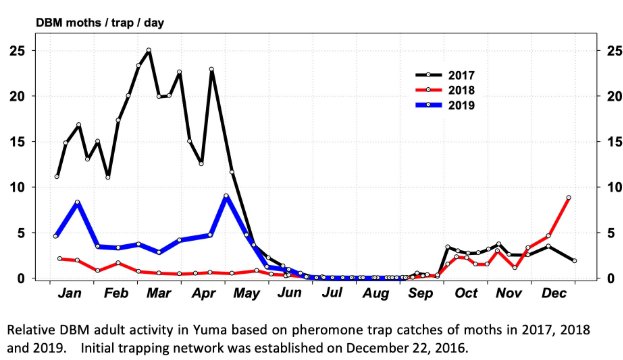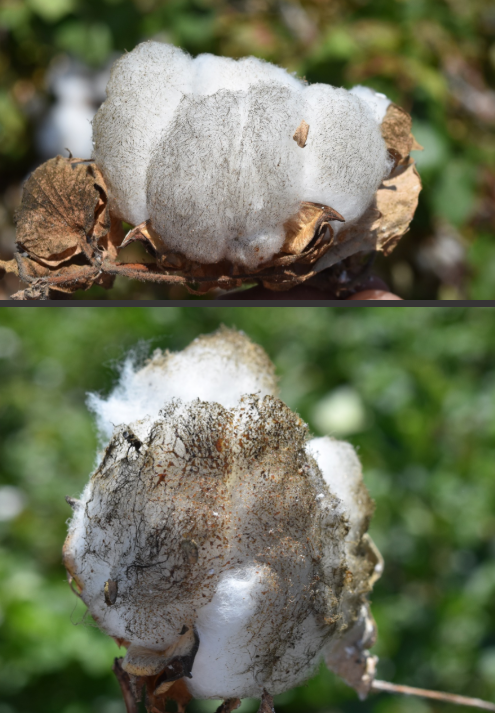
|
|
|
|

|
|||
|
|
|||
Talking with a few local growers and PCAs it is clear some are still apprehensive of diamondback moth (DBM) reappearing this fall in large numbers. In the desert, the DBM is typically considered a minor pest that occasionally builds up to damaging levels in the winter and spring. In most years, growers can easily control the pest with 1-2 well timed insecticide sprays. But in the fall 2016, outbreaks of an invasive DBM population occurred throughout all vegetable growing regions in Arizona where it was determined that the source of the DBM originated from infested transplants grown in desert greenhouses. We later discovered that the invasive DBM population was very resistant to the diamide insecticides (Coragen, Beseige, Belt and Vetica). The DBM infestations experienced by Arizona growers that season were not anticipated, and overall, the resistant pest caused serious economic losses in cole crops. However, the population abundance of DBM in the desert the last two seasons has been significantly lower than what was observed under widespread outbreak conditions in 2016. We received no complaints from PCAs or growers of uncontrollable DBM infestations, crop damage or yield losses in 2017 or 2018, and PCAs reported having no difficulty controlling larvae or adults with commonly used insecticides, including the diamides. Field inspections of transplants yielded no larvae on plants arriving from local and coastal nurseries. Thus, we have concluded that the DBM that appeared in 2017 and 2018 were a distinctly different population than those that infested crops in the fall of 2016. It is likely that the DBM population in 2017 and 2018 migrated concurrently onto both direct-seeded and transplanted cole crops in wind currents following September storms. Although, field trials and conducted at the Yuma Ag Center confirmed the local DBM populations were susceptible to the key insecticides (Radiant, Proclaim, pyrethroids, Verimark/Exirel) used for their management, we did find low levels of resistance to Coragen in two Yuma field populations last fall and one population from the Yuma Ag Center this past spring. We will discuss this development and its implications for management in more detail in the next IPM update (Sep 18). In an attempt to document the impact of the DBM outbreaks on Arizona cole crops the past three seasons, we conducted a two-part survey of growers and PCAs from Yuma, Maricopa and Imperial Counties in April 2019 to (1) estimate the severity of yield losses from DBM on direct-seeded and transplanted cole crops, and (2) the intensity of chemical management required to control DBM, and associated level of control provided by each insecticide product used. To download a copy of the survey results, please go to Diamondback Moth on Desert Cole Crops: Survey Results from 2016-2018. | |||
| Back | |||
|
For questions or comments on any of the topics please contact Marco Pena at the Yuma Agricultural Center.
|
|||
|
Home |
Cotton | Veggies |
Forages | Grains
| Citrus |
Crop x Crop Insects | Diseases| Weeds | Pesticides | Economics | News | Weather | Research | Photos | Contacts | General Info. Copyright © 2001 University of Arizona, College of Agriculture and Life Sciences Webmaster: Al Fournier (acis@ag.arizona.edu) |
|||


